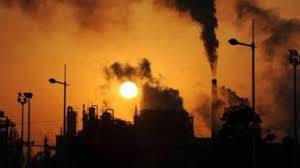Govt defends revised framework for SO2 emission norms

The Indian government has revised its sulphur dioxide (SO₂) emission standards for coal-based thermal power plants. The Ministry of Environment, Forest and Climate Change (MoEFCC) issued a new notification on July 11. It introduces a more flexible, category-based approach to regulating SO₂ emissions. The decision has drawn criticism from environmental groups and opposition leaders, but the government says it is practical, science-backed, and necessary.
Background: Delays and Deadlines
India introduced stricter SO₂ control standards in 2015. Power plants were expected to install flue gas desulphurization (FGD) units by 2017. These systems reduce harmful SO₂ emissions. However, repeated delays pushed deadlines further, and today, fewer than 10% of plants have installed the required technology.
The New Categorization
The government’s revised plan divides thermal power plants into three groups:
- Category A: Plants within 10 kilometers of large cities (population over 1 million). They must install FGDs by December 31, 2027.
- Category B: Plants near polluted or non-attainment zones. These will face case-by-case review by an expert panel.
- Category C: All remaining plants. These are exempt from FGD installation. However, they must continue using tall stacks to disperse emissions and reduce local impact.
The ministry says this shift aligns with available scientific data and aims to reduce unnecessary costs.
Why the Government Supports the Change
The ministry cited reports from IIT Delhi, NEERI, NIAS, and the Central Pollution Control Board (CPCB). According to their findings:
- Ambient SO₂ levels in most areas remain within national limits.
- SO₂ contributes less than 13% to PM2.5 concentrations in many cities.
- Retrofitting all plants with FGDs would cost ₹2.5 lakh crore.
Officials say such high costs may not justify the environmental benefit. In addition, they warn that widespread FGD use could raise CO₂ emissions by nearly 69 million tonnes between 2025 and 2030. The extra emissions would result from energy and material demands during FGD operations.
The government also estimates the new policy could cut power costs by 25 to 30 paise per unit. This could ease pressure on both consumers and power producers.
Political and Environmental Response
The response from the opposition and green groups has been critical. Former Environment Minister Jairam Ramesh described the move as a “rollback” that undermines public health. He argues that:
- SO₂ leads to the formation of secondary PM2.5, a pollutant linked to heart and lung diseases.
- The national air quality standards were last updated in 2009. Critics believe they no longer reflect current health research.
- With so few plants having FGDs, the change sends a message that pollution control is optional.
Environmentalists also say that granting exemptions to Category C plants creates a gap in accountability. They worry that many of these plants operate in rural or vulnerable regions.
Climate and International Impact
India remains under pressure to lower its carbon footprint. Coal continues to power over 70% of the country’s electricity. While SO₂ isn’t a greenhouse gas, it contributes to acid rain and smog, especially in areas with high coal use.
Relaxing emission rules, critics warn, could hurt India’s climate reputation. They argue it may weaken the country’s position in global climate talks and raise questions about its commitment to the Paris Agreement.
What Happens Next?
The government insists it will continue to monitor air quality closely. Category B plants will be evaluated using pollution data and local impact assessments. However, critics demand more transparency. They are calling for public access to environmental reviews and health studies.
Legal challenges are also likely. Several environmental organizations plan to challenge the policy in court. They want the courts to review the decision’s health and environmental implications.
Conclusion
The revised SO₂ framework reflects the government’s attempt to balance environmental goals with economic realities. Supporters see it as a data-driven shift that avoids unnecessary costs. Critics, however, say it prioritizes industry over health and may slow progress on pollution control. In a country struggling with severe air pollution, the effects of this policy will need close scrutiny.






